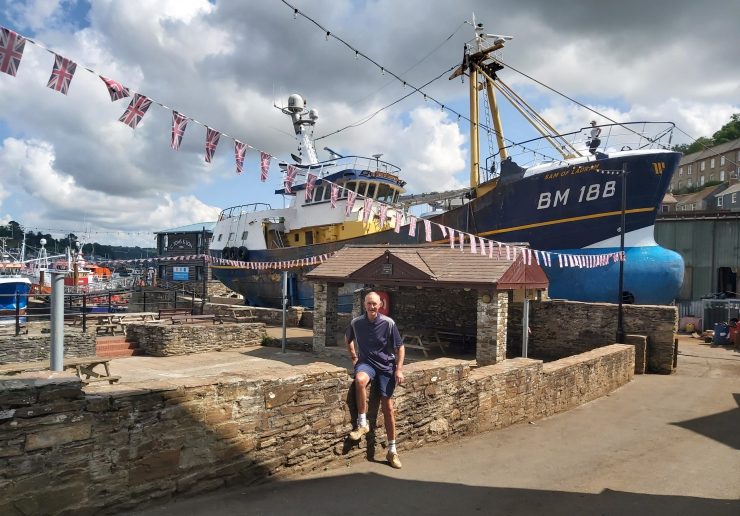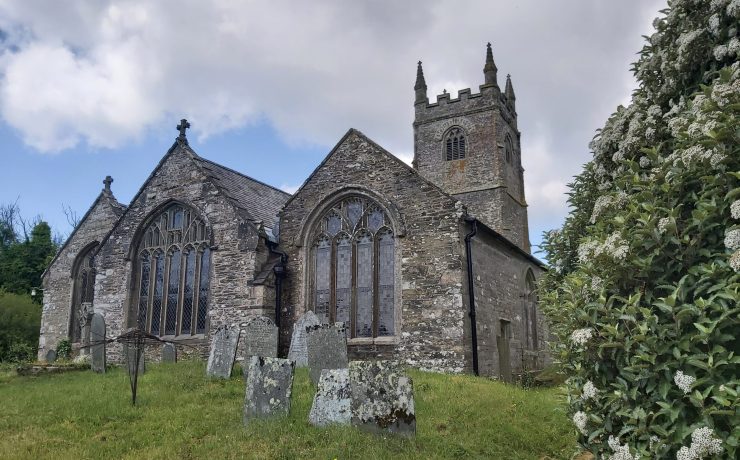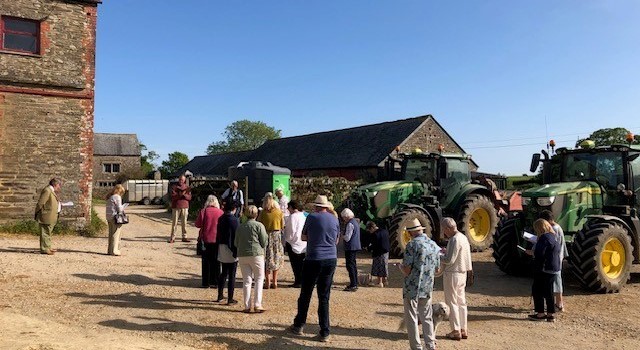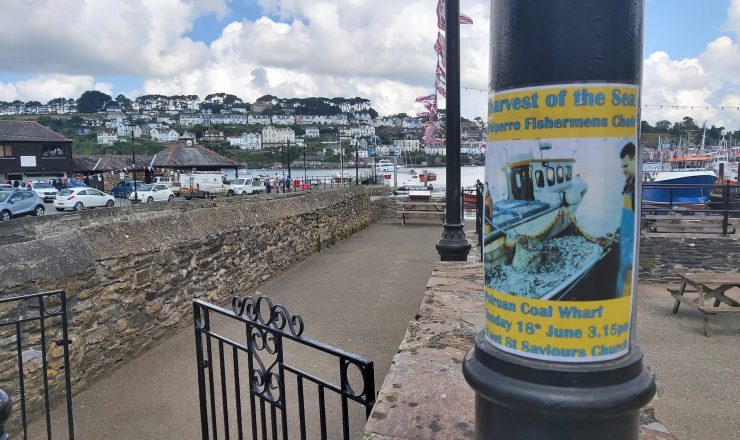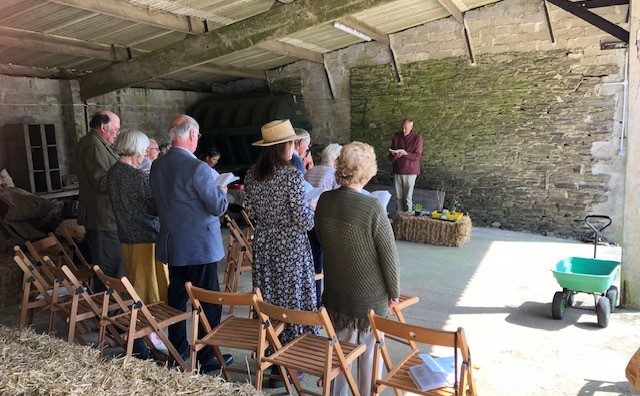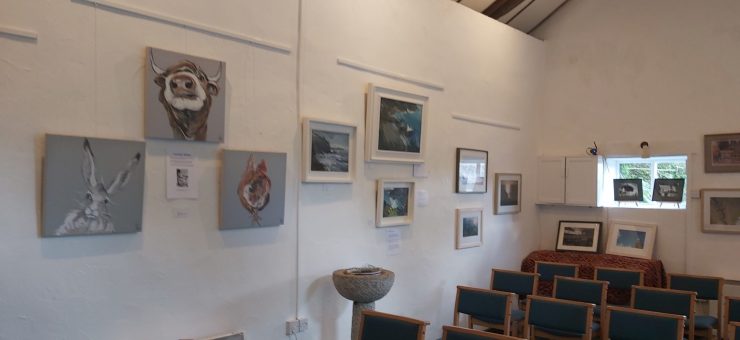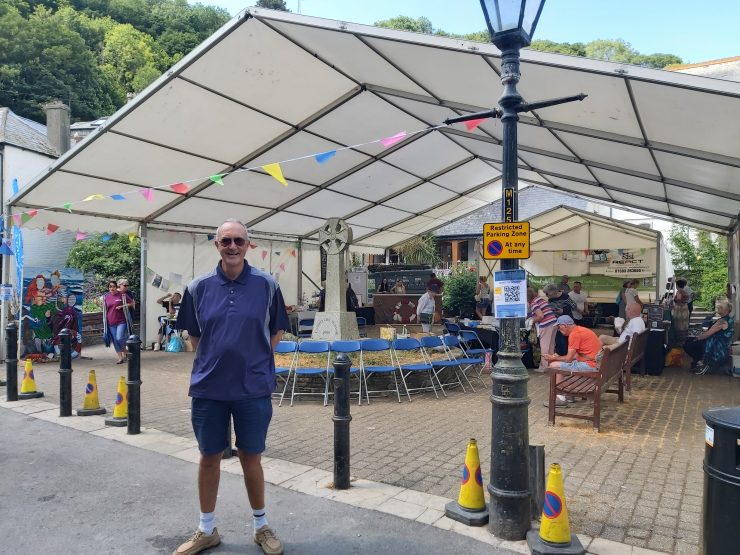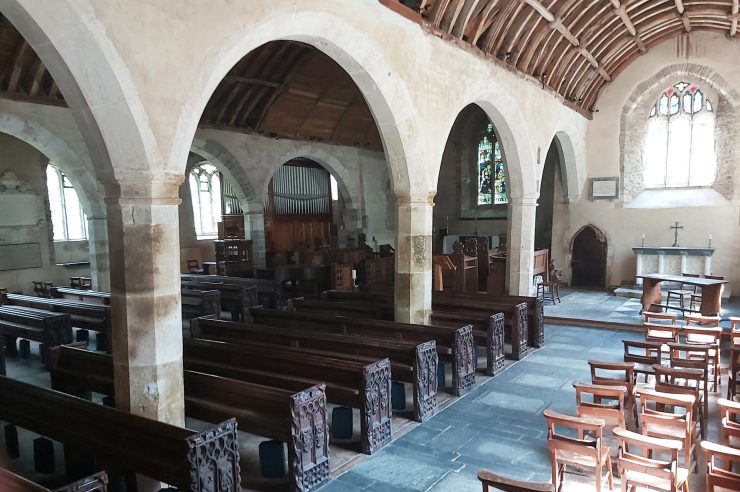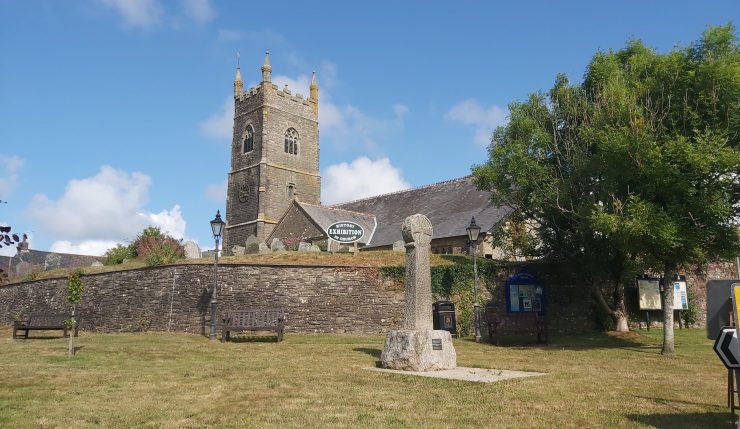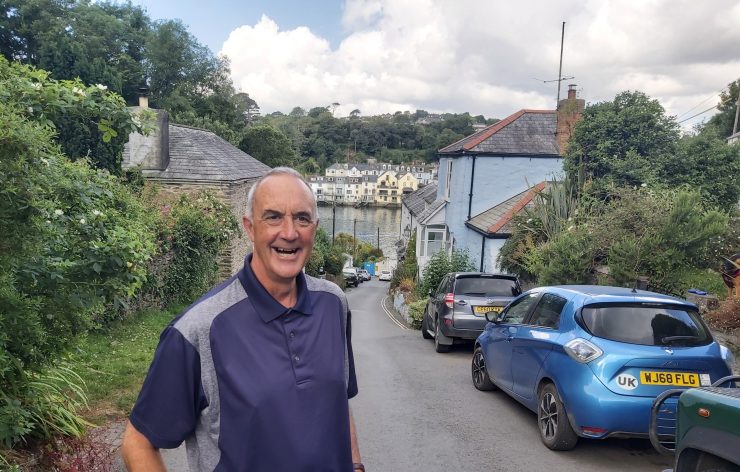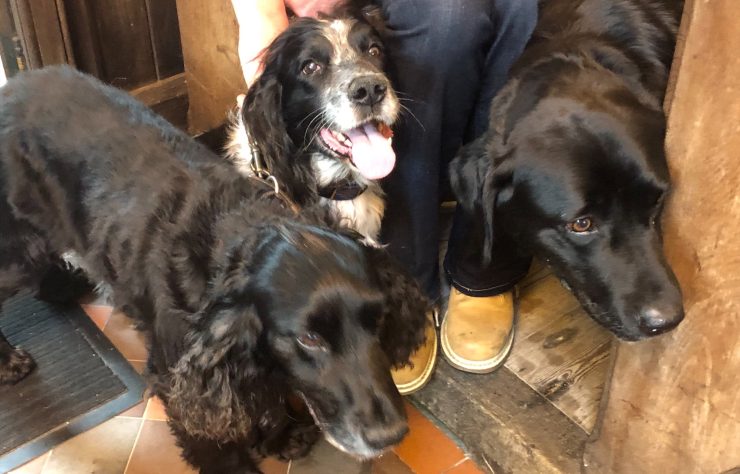Tales from Trelawny
The Reverend Richard Allen had been working as a school chaplain when, a few years ago, on a half-term trip to Cornwall, he’d taken a walk from Bodinnick to Looe.
It was then that he’d heard that the role of Rector to the Benefice of Trelawny – encompassing the parishes through which he’d just walked – was vacant.
“I just had a feeling I should apply for the job,” he recalls. “But I’d never done any rural ministry before. I had no idea how to do it.”
Covering the remote parishes of Lanreath, Lanteglos, Lansallos, Talland and Pelynt, the Benefice of Trelawny is about as rural as it gets.
It’s an area of extraordinary natural beauty – of essentially Cornish landscapes of rugged coastline and rolling countryside.
Richard’s wife is Cornish, and his two daughters also live in Cornwall. His son’s just up the road in Exeter – so, in many ways, it felt like coming home.
When Richard first arrived at his new Benefice, all the churches had just been closed due to the pandemic. So, he’d started to arrange worship meetings at safe social distances outside.
“We were probably getting twice the numbers we’d have had in church,” he explains. “People felt safe outside, and we could even sing hymns. That’s how we fell upon outdoor ministry – Covid taught us that.”
It’s a form of ministry which he’s since continued to pioneer with a great deal of success.
“It’s different,” he says. “I’ve fallen on a way of making friends with our communities through outdoor ministry.”
That ministry includes lambing and ploughing services, and services to bless tractors and combine harvesters, services in fields and barns and on village greens, as well as farmyard nativities.
“It’s absolutely bonkers what we do,” he laughs. “We’re just trying to see what we can do in this really quirky environment.”
In June, he ran services for pets at Pelynt, Lansallos and Lanreath. In early July, there’ll be an equestrian service at Pelynt.
“We usually get about eight or nine horses,” he says. “If you don’t have a horse yourself, you can come and meet a horse. And of course the kids love the horses.”
In addition to their traditional harvest festivals at the end of the summer, this June the Benefice ran festivals celebrating the harvest of the sea in Bodinnick, Polruan and Polperro.
That Polperro event attracted about 250 people.
“And we had a lovely Cornish folk concert afterwards,” Richard says. “That was a perfect opportunity to have a chat over a beer. Ideal.”
Another service was hosted at the Big Green in Polperro on 25th June as part of the Polperro festival.
The Trelawny Benefice’s popular worship activities also include a series of ‘Church on the Quay’ events, which they’ll be running in Polruan over five Sunday afternoons during July and August.
Those events involve Bible-reading, preaching and prayer, along with hymns and performances by local choirs, right on the quayside at Polruan wharf. They can draw around 150 people each time.
“We’re providing a little bit of church in a fun way,” Richard says. “After the service, we have a concert. That gives us the chance to walk around, chat to people and have a beer.”
Richard ensures that his outdoor services include a social aspect, in order to help bring together people from isolated rural communities. That might be a chance to chat over pasties, cider or soft drinks, a glass of Pimm’s, or a good old-fashioned Cornish cream tea.
They even run an annual carol service which takes place on the ferry across the River Fowey.
“It’s not the kind of traditional old carol service that everyone’s used to,” Richard says. “It’s a carol service with a difference. It’s a bit quirky – a bit of a draw.”
Richard gives a lot of credit for these innovative approaches to the people in his parishes.
“I’m living in creative communities with creative people,” he says. “And every day I’m learning.”
He stresses that the success of these initiatives across the Benefice is thanks to the efforts and commitment of local parishioners.
He’s clearly very approachable. Everywhere he goes, people stop him for a chat.
One of the people we met while touring Trelawny was Alison, who lives near St John’s in Bodinnick.
“Our little church is loved for bringing local people together in simple community gatherings,“ she said.
Richard’s pioneering approach isn’t of course only about worshipping in the great outdoors. In Lanreath, they’ve established a successful music group, and have seen congregation grow significantly in the last couple of years. The small church in Bodinnick also serves as a gallery exhibiting the work of local artists, attracting holidaymakers passing through on the coastal tourist trail.
In Polruan, Richard works closely with the local school and runs youth activities at the village hall. Meanwhile, the church at Pelynt offers an annual exhibition looking at local history, which runs from Easter through till the autumn.
At the same time, Richard’s been busy reestablishing opportunities for regular Anglican worship in Polperro, fifteen years after the closure there of the Church of St John. He supports the work of the village’s Methodist church, for whom he conducts an ecumenical service every couple of months.
He also conducts three services each month out in the small rural community served by the Church of Lanteglos-by-Fowey. This historic church, famed for having hosted the wedding of the renowned author Daphne du Maurier in 1932, dates back to the fourteenth century.
“I find an incredible stillness in this church, a peace,” Richard says. “It’s also something of an oasis for walkers passing through. Lots of people pop in.”
They have a minibus to help people from across the parish attend services at this remote church.
“Anyone who wants to come, we get them here,” Richard says.
It seems clear that Richard’s very focused on supporting the wellbeing of his parishioners, their families and their communities.
“We’re a community church,” he says. “That’s what we’re about – serving our communities – being at the heart of our communities.”
Richard constantly stresses the value of flexibility and innovation in his mission to reach out to communities and to help to support those in need.
“The message is the same, but our worship can take a massive variety of forms,” he says. “I’ve spent all my life trying to pioneer creative things.”
Richard was born and brought up in Bristol, and went on to study political geography at Queen Mary College in London.
After that, he moved to Devon to study for a postgraduate teaching qualification. It was there, in Exmouth, that he’d been introduced by a friend to the Free Church of England – a group that had moved away from the mainstream church in response to the growth of the Anglo-Catholic movement during the nineteenth century.
Richard had been raised in that high Anglican tradition, and had therefore found this evangelical group something of culture shock, and a bit of a revelation.
After a brief stint in a teaching job in Kent, he’d felt to called to return to Exmouth, where he taught for two more years before starting to train for ministry with the Free Church there.
He stayed there for ten years and then moved into his first school chaplaincy.
“It was then that the Bishop of Exeter asked if I’d like him to straighten me out,” he says.
And so, encouraged and supported by the Bishop, he’d transitioned from the Free Church back into mainstream Anglicanism.
He supposes however that these days you could hardly tell the difference between those two branches of Christian faith that diverged nearly two hundred years ago.
Richard is himself pragmatic about his styles of worship and is grateful to parishioners who, alongside more traditional forms, are also eager to try something new – to combine the rites prescribed by the Book of Common Prayer with more modern kinds of outreach ministry than were generally available back in 1662.
“Some people are really keen on doctrine,” he says. “But I’m not so hooked up on that kind of stuff. I’m just a Christian trying to lead a Christian life.”
But he says he’s proud, as he prepares to celebrate thirty years of ministry, to continue to wear, during church services, the presbyter’s hood of the Free Church of England.
“They gave me very practical training,” he says. “That still comes through in what I’m doing now. It’s a very hands-on job.”
Indeed, he conducted his first funeral when he was only 24.
“The rector was away, so I just had to do it,” he recalls. “I’ve always learnt by doing.”
His sense of wonder and joy at discovering new ways to share and celebrate his faith is very clear.
“I’d also love it if other people would like to learn about what we’re doing here in Trelawny and might perhaps be inspired by it,” he says.
Information about all of the Trelawny Benefice’s activities is available on their website at: https://www.trelawnybenefice.com/
